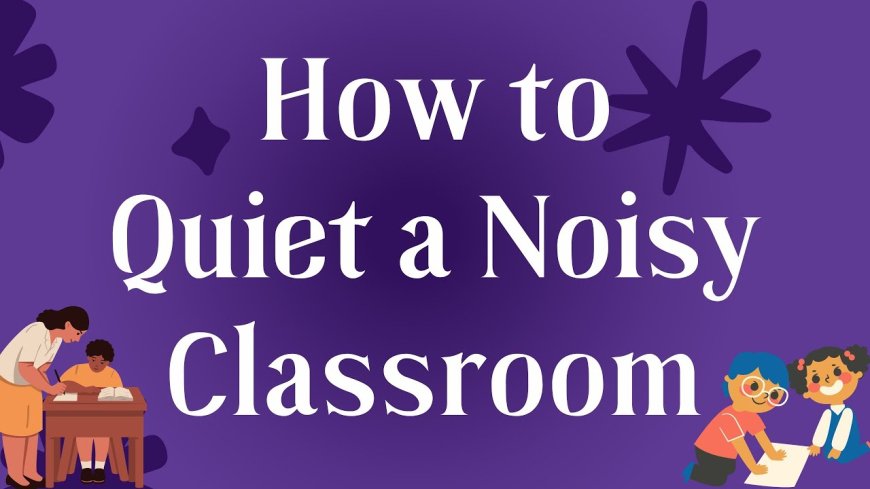How to Handle a Noisy Classroom Without Shouting
Discover 10 effective ways to manage a noisy classroom without yelling. Create a calm, respectful learning environment with ease.

Maintaining discipline in a classroom can be a challenge, especially when students are too noisy. For many teachers, the first instinct might be to raise their voice in order to regain control. But yelling often leads to more chaos, stress, and a weaker teacher-student bond. Fortunately, there are more effective ways to manage classroom noise—without raising your voice.
Here are 10 practical methods every teacher can try to create a calm, focused environment without ever yelling.
Set Clear Rules from Day One
Students need to know what behavior is acceptable and what isn’t. At the beginning of the school year or term, lay down clear, simple rules for speaking, listening, and movement. Repeat them regularly so everyone remembers. Visual reminders like posters on the wall can help reinforce these expectations.
Use Silent Signals to Communicate
Non-verbal cues can speak louder than words. Develop simple hand gestures or signals that mean “quiet,” “stop,” or “pay attention.” Raise your hand, switch off the lights briefly, or hold up a countdown with fingers. Students quickly learn to respond when they recognize these signs.
Lower Your Voice, Don’t Raise It
Strangely, speaking softer often captures attention better than yelling. When students notice you are speaking more quietly, they instinctively stop talking to hear you. This change in energy can create a calm atmosphere and regain their focus without stress.
Move Closer to the Noise
Sometimes, a simple walk toward the noisy part of the room is enough to quiet things down. Proximity makes students more aware of their behavior. You don’t need to say anything—just being nearby often encourages them to settle down.
Praise the Positive
Students respond well to encouragement. Instead of focusing on those who are misbehaving, praise the ones who are doing the right thing. A simple “I like how Group A is working quietly” can motivate others to copy the same behavior without being called out.
Use Countdown or Rhythm Techniques
Countdowns work like magic. Say, “In 5 seconds, I want quiet,” and count down slowly. You can also clap a rhythm and have the class repeat it. These methods help refocus attention in a fun, non-threatening way.
Build a Strong Routine
Routines bring order. When students know what to expect during a lesson, they feel more secure and are less likely to get noisy. Start every class with a short calming activity or a clear schedule. Transition smoothly from one activity to another to avoid confusion.
dd Brain Breaks
Children, especially younger ones, can’t sit still or quiet for too long. Build short brain breaks between lessons—like a stretch, a song, or a quick game. This helps release energy in a structured way, so students don’t become restless and loud.
Talk to Students One-on-One
If certain students are always loud, have a private conversation with them. Find out what’s causing their behavior and work together to find solutions. When students feel heard and respected, they’re more likely to cooperate.
Stay Calm and Consistent
Most importantly, keep your cool. When students see that you’re always calm and firm, they’ll take you seriously. Being consistent with your rules and responses shows that you are in control, even without raising your voice.
In Summary
Classroom noise is natural, but it doesn’t have to be overwhelming. With smart strategies like silent signals, routines, and calm communication, teachers can manage noise levels effectively—without ever needing to shout. It’s not about being loud. It’s about being clear, kind, and in control.




























